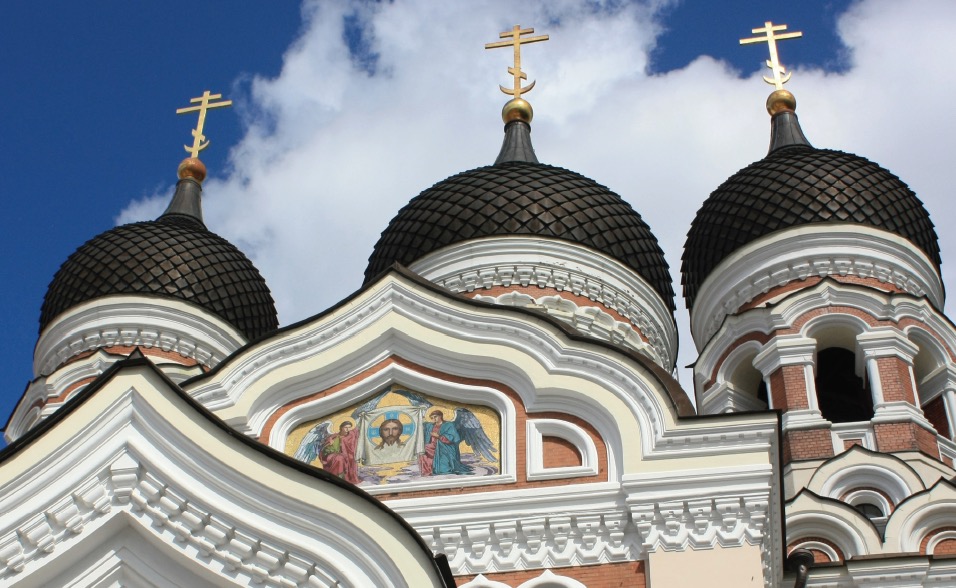In 1995, Pope St. John Paul II issued an apostolic letter titled Orientale Lumen, on the Eastern Churches.
He wrote that the “light of the East” — that is, the Eastern Catholic Churches — had “inspired my predecessor Pope Leo XIII to write the apostolic letter Orientalium Dignitas, in which he sought to safeguard the significance of the Eastern traditions for the whole Church.” He then stated, “Since, in fact, we believe that the venerable and ancient tradition of the Eastern Churches is an integral part of the heritage of Christ’s Church, the first need for Catholics is to be familiar with that tradition, so as to be nourished by it” (No. 1).
Reading that paragraph, I recall a conversation I once had with a devout Catholic lady about the perpetual adoration of the Blessed Sacrament at her parish. “Does your parish have Eucharistic Adoration?” she asked. “No,” I replied, “but that is because Eastern Catholic parishes do not have perpetual adoration.” She was stunned; in fact, I think she was scandalized! I pointed out that perpetual adoration — like the Rosary and the Stations of the Cross — is a Western devotion, and not part of the Eastern Catholic (or Orthodox) tradition. While the origins of perpetual adoration can be traced back to St. Francis of Assisi in the 1200s, it became widespread after the Reformation and the Council of Trent as a means of promoting piety and addressing the rejection, by Protestant sects, of belief in the Real Presence (see Pages 12-15). But why not in the East? As my pastor has wryly noted, “The East has witnessed plenty of heresies, but never a rejection of the Eucharist.”
There are three basic points to consider in relation to teaching and defending the Catholic faith. First, learning more about the Eastern Churches will increase your knowledge about Catholicism and deepen your love for the Church. St. John Paul II put this in rather striking terms, saying that “conversion is . . . required of the Latin Church, that she may respect and fully appreciate the dignity of Eastern Christians, and accept gratefully the spiritual treasures of which the Eastern Catholic Churches are the bearers, to the benefit of the entire catholic communion” (No. 21).
Second, knowledge of the Eastern Churches highlights unity and diversity that is truly, authentically Catholic. Eastern Catholicism demonstrates that the Catholic Church is not a monolithic and homogenous Western institution, but is an ancient, catholic and worldwide communion of the faithful united by dogma, doctrine and the See of Peter.
Third, these distinctions, and the history behind them, are helpful to the Catholic catechist and apologist. Knowledge of some basic facts about Eastern Catholicism can clear away misconceptions and misrepresentations of Catholicism. For example, the fact that married men are commonly allowed to become priests in the Eastern Churches helps to do away with the notion that the Catholic Church has dogmatically declared that all priests must be celibate; it can help to demonstrate the difference between doctrine accepted by all Catholics — only men can be ordained priests — and disciplines unique to the East and West. The two matters are not equivalent.
Another good example is belief in the Real Presence. In the West, this marvelous truth was eventually described and defined in scholastic language, and often referred to as “transubstantiation.” Some fundamentalists and others will point to transubstantiation, which came out of the medieval era, as the creation and promotion of a sort of “magical” belief regarding the nature of the Eucharist. (All of Christianity, it should be noted, believed in the Real Presence until the Reformation.) Yet Eastern Catholics and Eastern Orthodox, as well as the ancient Oriental Churches — who split from the Church in the fifth century — all believe that the Eucharist is the Body, Blood, Soul, and Divinity of Jesus Christ, even if they use differing terminologies.
The light of the East is for the whole Church, and it helps illuminate the Faith in ways big and small.
Carl E. Olson is the editor of Ignatius Insight (www.ignatiusinsight.com). He and his family live in Eugene, Ore.

